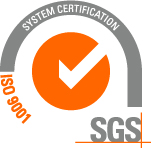The Mobility Control Centre controls the data acquisition process, the maintenance and automatic sanctioning system, monitors in real time - together with other operators (not just institutional ones) - the overall mobility and provides users with information through direct and indirect channels. This supervision is guaranteed from 6.30 am to 10 pm every day of the year.
The Mobility Control Centre has an open structure, interchangeable and expandable, based on two levels of control: the centralised supervisor and systems that operate on a first level with logical intelligence distributed through peripheral devices. ITS systems (Intelligent Transport System) that operate on a first level provide support to regulate urban traffic and create a more efficient and sustainable mobility of vehicles and people.
The Mobility Control Centre publishes information on variable message signs and on electronic displays, updates news on the App and on www.muoversiaroma.it, marks alerts on events or road blocks on the Waze app; supervises all the data received from public transport operators (Atac and Roma Tpl) in order to update, in real-time, the estimated waiting time for the next bus at bus stops.
The information is spread thanks to the non-stop monitoring of the system, through a network of sensing devices installed on the territory and with the collaboration of other institutional operators that carry out activities that have a direct impact on the mobility of the city: CCTV cameras, traffic monitoring systems, UTT (Urban Travel Times), these are just some examples of the above-mentioned network of sensing devices.
Among the technological systems operated directly by the Mobility Control Centre, there are 1500 traffic lights; the Centre reports on any malfunctions and monitors the maintenance activity by using a dedicated phone line, mainly used by the municipal police.
The Mobility Control Centre also manages the automatic systems that check if any violations - such as breaching electronic passages to access the ZTL areas, occupation of bus lanes, crossing with red light and traffic speed cameras - are committed, .
ITS Technologies
Mobility ITS Technologies are developed within the Mobility Control Centre.
When the Mobility Control Centre was created, was also developed a series of technological devices such as: 45 CCTV cameras on an optic fiber infrastructure, 62 variable message signs (PMV), 93 traffic monitoring stations (STZ), that can monitor traffic and urban mobility in real time.
Further interventions - the so-called “Technologies Master Plan” (MP) - developed the following systems:
-
UTT System (Urban Travel Time) that gives the estimated urban travel time (currently operating on a road network of about 130 km)
-
an extension of the PMV system: another 10 variable message signs have been installed on tangential and radial routes of Rome
-
the CCTV system has been updated: 31 new cameras have been installed and the old ones replaced with more modern ones, and the optic fiber infrastructure has been extended as well.
The Urban Travel Time (UTT) is measured for each route and then each measurement is elaborated to calculate the urban travel time for all the routes. UTT uses a sensing devices system made of OCR cameras (smart sensor). The monitoring stations provide measurements and data on speed, flows and road classification. The data is acquired and memorised on a time basis of 5’ and 15’. In addition to the 93 monitoring stations based on electromagnetic spires, there are 17 sensors based on the analysis of images.
Every information on traffic flows and the classification received from the electronic control systems that detect violations is added to UTT. The PMV system is integrated with the Mobility Control Centre system and provides different types of information (e.g. travel times, diversions due to accidents or road blocks) to give users a wider range of options.
ITS Maintenance
Roma Servizi per la Mobilità guarantees the operational and functional maintenance of all lighting control systems and traffic control systems on the whole urban territory. It does so by managing long-running maintenance contracts whose activity consists in:
-
Ordinary maintenance: prompt intervention to solve any system malfunction quickly and a programmed activity of maintenance, surveillance and painting, in order to maintain every single device in perfect conditions
-
Extra-ordinary maintenance: repairing and restoring devices out of order due to accidents or damages, reviewing and improving the traffic lights regulations.
-
New developments: in accordance with the Department of Mobility, changing and restoring the existing devices or install new ones with improved technological systems (HW and SW).

